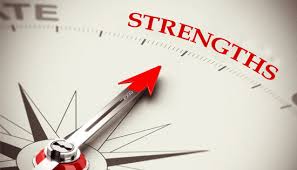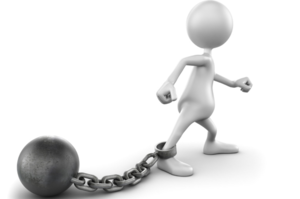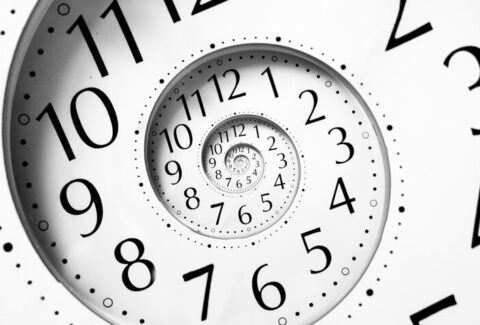Purpose: Finding What You are Best at
Several teachers were complaining about a boy who they felt was not suitable for learning in their type of classroom and school. He had difficulty following instructions and the traditional teaching methods were failing. This was a boy whose brain simply failed to adjust to traditional learning. Yet, he went on to develop the theory of relativity—one of the two main pillars of physics—and to set the tone in the evolution of quantum theory. He also subsequently won the Nobel Prize in physics. He has remained the number 1 scientist of the 20th century, and his intellectual achievements and originality have made his name synonymous with “genius.” Yes, you have undoubtedly figured out that I am talking about Albert Einstein.

What are you best at?
When was the last time you were posed this question?
How often do you automatically think about what you are not good at, in response to this question?
This is the third in a series of articles on how to live a life with purpose. In the first article-In Search of a Purpose, we went over the why of living a life with purpose, and I then promised to show you the steps to take. In the second article, I introduced the first step in finding a life with purpose—Finding Your Passion and the 6 steps to follow in order for you to get there. Through this series of exercises, I trust you now have a pretty good idea of what your passion might be. Otherwise, I recommend that you simply go back to review the related articles and go over the exercises once more. Once you know your passion, the second step in finding your life’s purpose is to then find out what you are best at.
Here are 7 steps to take in order for you to find what you are best at:
-
Brainstorm on the things you think and/or feel you are best at
-
Create a strength scale
-
Brainstorm on the things you think and/or feel you are weakest at
-
Create a weakness scale
-
Know which things you were best at as a child and growing up
-
Know which things you were weakest at as a child and growing up
-
Estimate the level of consciousness of your strength and weakness on a scale of 1 to 10, where 10 is highest of level of consciousness and 1 is lowest level of consciousness
Now, let’s explore each of the above 7 steps for you to take in search for what you are best at:
Brainstorm on the things you think and/or feel you are best at
In the previous article, Finding Your Purpose, I introduced the concept of 13 categories of human facets. Similar to uncovering the things we like, enjoy, or love, finding out what we are best at may vary, which, again, can create a challenge for us in answering the question: “What we are best at.”
In order to simplify such a task and to be sure we pay attention to all our dimensions, let us first categorize them based on the different aspects of life that we all share. This list is the same as in the previous article. Each one of us has:

-
A physical aspect
-
An emotional dimension
-
An intellectual facet
-
A social and relationship side
-
A spiritual expression
-
A philosophical, moral and ethical air
-
A scientific feature
-
A social justice, advocacy, community and political demeanor
-
A creative and imaginative dimension
-
A career and professional development aspect
-
A financial dimension
-
A personal development and learning aspect
-
A recreational dimension
This list captures the essence of all human facets, and I trust from the above 13 dimensions, you can engage in a series of exercises that will take you on the path of discovering what you are best at. Some of the steps are the same as in the previous article, and by now you should have had some practice in doing this and ideas of which people in your life you can ask and get support and feedback from.
Take a piece of paper, jot down whatever you think and/or feel you are best at. Write as much as you can, without  judging, without any hesitation, just do it;
judging, without any hesitation, just do it;
Reach out to 5 individuals: 1. Who lives with you; 2. One who knows you from childhood; 3. One who knows you from school; 4. Someone associated with your career or work; 5. And your present or past romantic relationship. Ask them to tell you what they think you are best at;
Now, take what you wrote, what each of your 5 selected individuals wrote, and plot them in each of the 13 categories above. What are your findings? What was most commonly identified? Hold on to your finding and, now, let’s move on to the next step.
Create a strength scale
(Please note that I use this term “strength scale” as a type of default term, although, to my knowledge, there is no such exact scale; so, I use this expression for the lack of a better one regarding using a scale to identify strengths or what you are best at. However, by following my instructions below, you will find a strength scale to be helpful, useful, and practical. The same applies to the use of a weakness scale).
 Of all the things you have realized for yourself, or that others have told you that you are best at, where does each of them measure in your strength scale (10 being the strongest and 1 being the least strong)? It may be more manageable if you use the categories you have come up with from the previous step. What are your findings? What does your strength scale look like? As in the previous step, hold on to your findings, and now, let’s move on to the next step.
Of all the things you have realized for yourself, or that others have told you that you are best at, where does each of them measure in your strength scale (10 being the strongest and 1 being the least strong)? It may be more manageable if you use the categories you have come up with from the previous step. What are your findings? What does your strength scale look like? As in the previous step, hold on to your findings, and now, let’s move on to the next step.
Brainstorm on the things you think and/or feel you are weakest at
Just like Step I: Take a piece of paper, jot down whatever you think and/or feel you are the weakest at. Write as much as you can, without judging, without any hesitation, just do it;
Reach out to 5 individuals: 1. Who lives with you; 2. One who knows you from childhood; 3. One who knows you from  school; 4. Someone associated with your career or work; 5. And your present or past romantic relationship. Ask them to tell you what they think you are the weakest at;
school; 4. Someone associated with your career or work; 5. And your present or past romantic relationship. Ask them to tell you what they think you are the weakest at;
Now, take what you wrote, what each of your 5 selected individuals wrote, and plot them in each of the 13 categories mentioned above. What are your findings? What was most commonly identified? Hold on to your finding, and now, let’s move on to the next step.
Create a weakness scale
 Of all the things you have realized for yourself, or that others have told you that you are the weakest at, where does each of them stand in your weakness scale (10 being the weakest and 1 being the least weak)? It may be more manageable if you use the categories you have come up with from the previous step. What are your findings, once again? What does your weakness scale look like? As with the previous step, hold on to your finding, and now, let’s move on to the next step.
Of all the things you have realized for yourself, or that others have told you that you are the weakest at, where does each of them stand in your weakness scale (10 being the weakest and 1 being the least weak)? It may be more manageable if you use the categories you have come up with from the previous step. What are your findings, once again? What does your weakness scale look like? As with the previous step, hold on to your finding, and now, let’s move on to the next step.
Know which things you were best at as a child and growing up
Here are some ways to go through this step: 1. Do you know what you were best at as a child, growing up? 2. Find as many people as possible, who can speak to this, especially those closest to you, like your parents, your siblings, and your childhood friends, and even your teachers and coaches; 3. How much of what you used to be best at as a child still rings true today? How much no longer does, and can you say why; 4. If there is much discrepancy and you do not know why, I invite you to take some time to ponder over that and wonder.
Know which things you were weakest at as a child and growing up
Just like Step V, here are some ways to go through this step: 1. Do you know what you were the weakest at as a child, growing up? 2. Find as many people as possible who can speak to this, especially those closest to you, like your parents, your siblings, and your childhood friends, and even your teachers and coaches; 3. How much of what you used to be the weakest at as a child still rings true today, how much no longer does, and can you say why; 4. If there is much discrepancy and you do not know why, I invite you to take some time to ponder over that and wonder. Bear in mind that information is in the difference and knowing as much as possible about both what you are or were best at, as well as what you are and were the weakest at can be one of the best steps in finding what you are best at.
Estimate the level of consciousness of your strength and weakness
Use a scale of 1 to 10, where 10 is the highest level of consciousness and 1 is the lowest level of consciousness. Finding what you are best at needs to be paired with a level of consciousness, if it is to be used in the most fruitfully way possible. Therefore, the last step in finding what you are best at involves answering the following questions: 1. Why am I best at the areas and categories I am the best at; 2. Why are these the areas and categories I am the weakest at? 3. Why are some of the things I was best at, as a child, no longer the case? 4. Why are some of these things I was the weakest at as a child, no longer the case? Please, strive to answer these questions in the least judgmental way possible. It is an exercise worth doing, the goal is to understand the why of what you are the best at and how to best use it to find your life’s purpose.
You now have a guide and key steps to follow, in order for you to find out what you are best at. More will be offered, but for now, if you take some time to go through the above steps in the most rigorous way possible, I can assure you that you will start noticing some changes in your modus vivendi (“way of life”).
I look forward to connecting again in our next article on “Combining Your Passion with What You are Best At.” Meanwhile, thank you for taking the time to embark on the journey with me towards finding what you are best at. I hope you have enjoyed your findings and please feel free to share.
Until soon,
Your friend,
Mardoche









